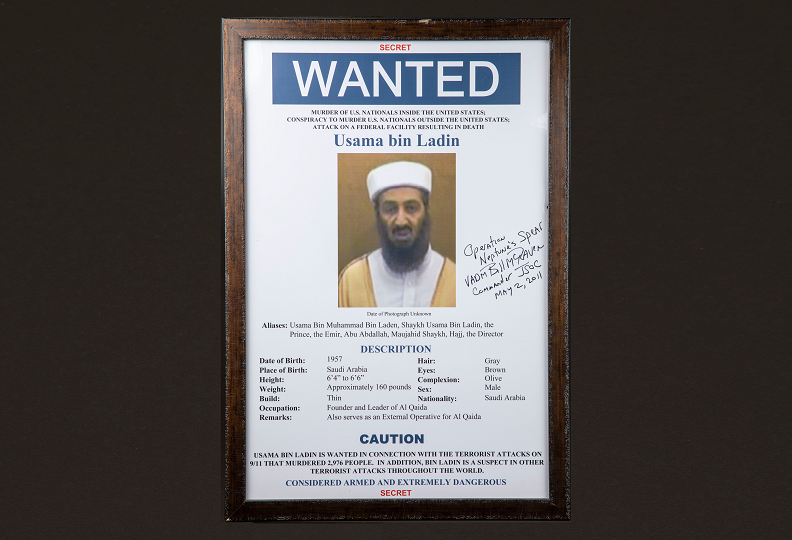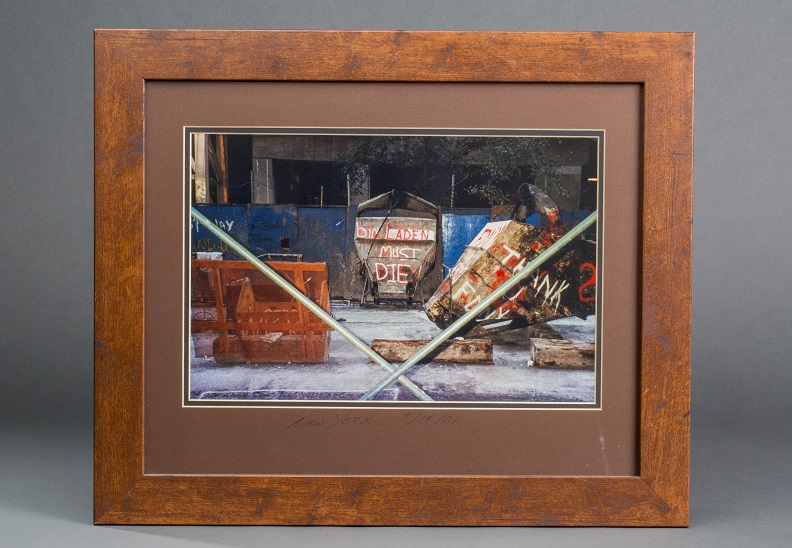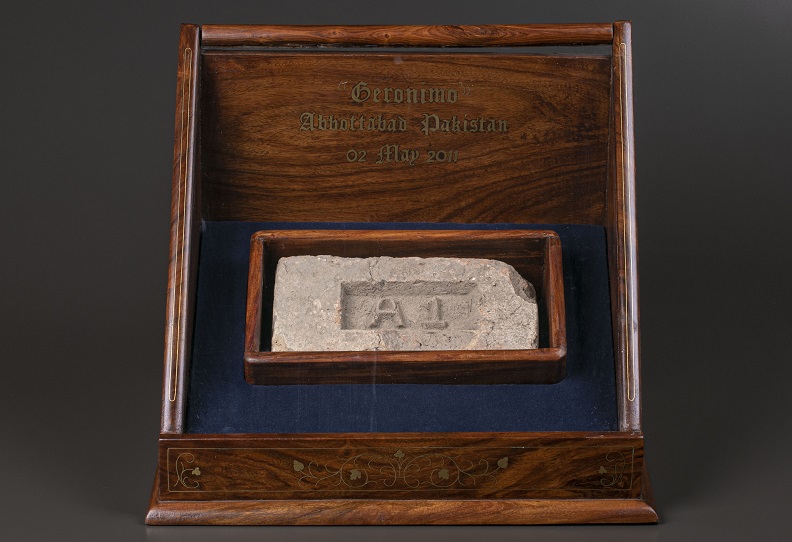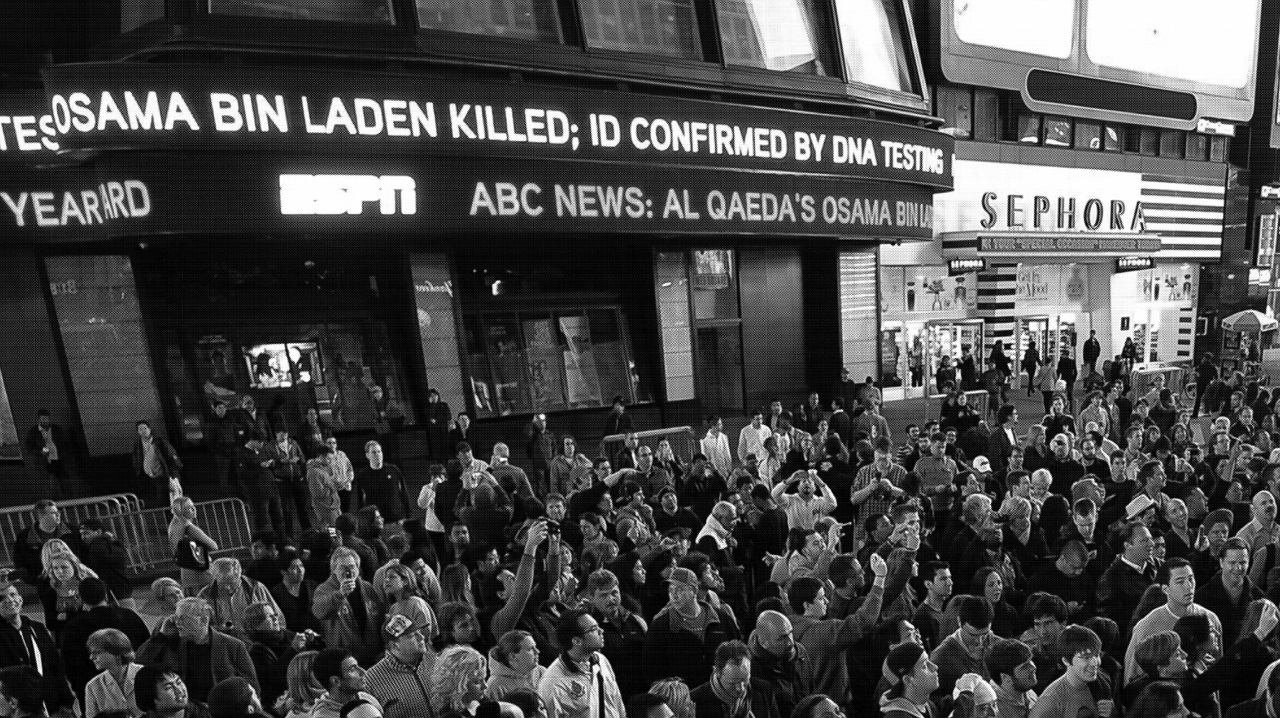Make a donation to the museum
Immediate Reactions
At 11:35 p.m. in Washington, D.C., on May 1, 2011 (EDT), U.S. President Barack Obama announced the killing of Osama bin Laden on live television.
Immediate Reactions-1 V3
Crowds soon gathered outside the White House, near the World Trade Center site in New York City, and elsewhere to mark the moment. International responses to bin Laden’s death were largely supportive of the mission, though some critics questioned the legality of the covert execution.
The news of bin Laden’s death inspired the full gamut of emotions. For many in the intelligence, law enforcement, and military communities who had spent years searching for bin Laden, as well as for some family members of 9/11 victims, the raid produced a sense that a long-anticipated mission had been completed at last.
A range of responses to the news of bin Laden's death are explored through the artifacts and firsthand accounts below.

Wanted poster for Osama bin Laden signed by Vice Admiral McRaven after Operation Neptune Spear. Courtesy of Sean and Jennifer O’Donnell.
After the raid, Vice Admiral William McRaven went from Jalalabad to Bagram Air Base in Afghanistan. He noticed that an Osama bin Laden wanted poster that had been hanging in the base for years was missing. The poster had served as motivation for U.S. forces. Soon after, McRaven’s colleagues presented him with the poster, saying, “Admiral, I think this is yours.” McRaven later signed the poster.

Framed photograph depicting anti–bin Laden graffiti near Ground Zero. Collection 9/11 Memorial Museum, Gift of Gordon and Kathleen Haberman, parents of Andrea Lyn Haberman.
Gordon and Kathleen Haberman’s 25-year-old daughter Andrea Lyn Haberman was killed as a result of the 9/11 attacks at the World Trade Center. The Habermans drove from Wisconsin to New York City to search for her. There, Gordon photographed an anti-Osama bin Laden message spray painted near Ground Zero. The Habermans later framed the image and hung it in their living room. On the night of bin Laden’s death, they took down the photograph.

Brick from Osama bin Laden’s Abbottabad compound presented to CIA station chief. Courtesy of retired CIA Officer Mark Kelton in memory of those who died on 9/11 and in honor of all those who helped deliver justice to their killer.
After the raid, a CIA officer presented Mark Kelton, the CIA station chief in Pakistan who had overseen on-the-ground intelligence operations, with a brick removed from Osama bin Laden’s compound. The presentation case bears the code name for bin Laden used during the raid, Geronimo, as well as the mission’s date in Pakistani time. The brick’s A-1 marking is significant for its closeness to AC-1, an acronym used for bin Laden’s Abbottabad compound.
